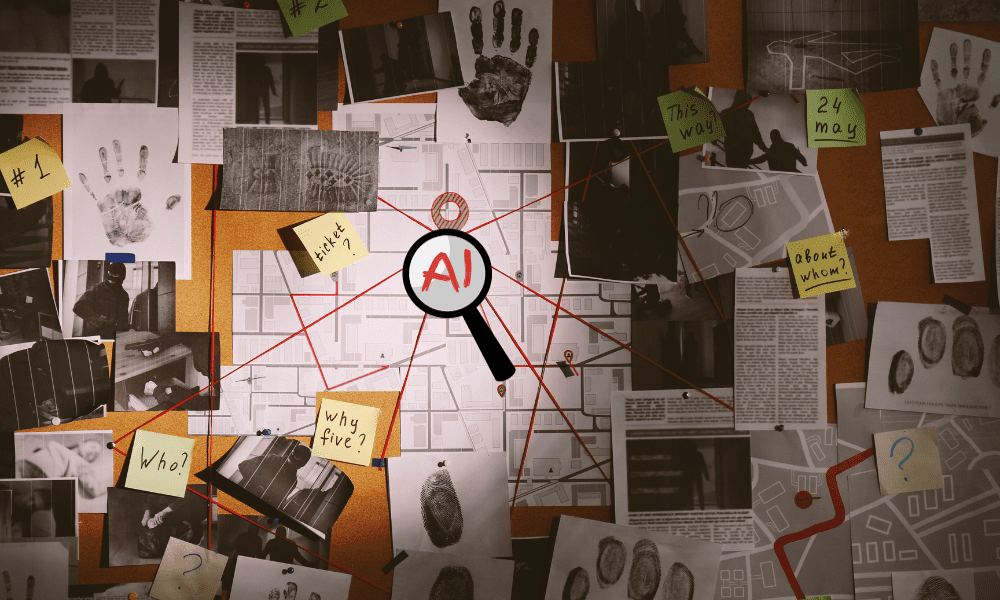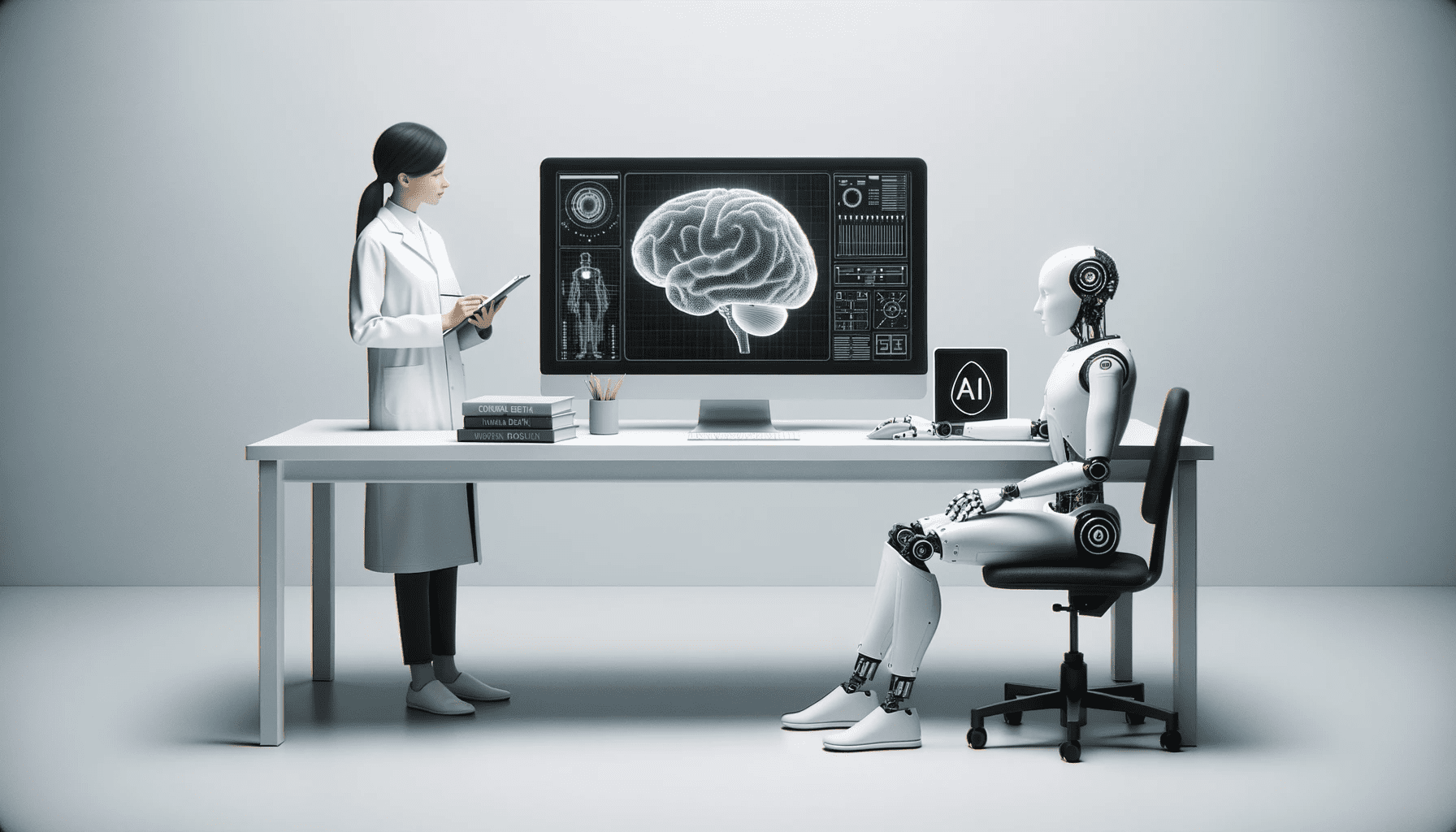
Image by Editor
Artificial Intelligence is undoubtedly the buzzword of our time. Its popularity, particularly with the emergence of generative AI applications like ChatGPT, has brought it to the forefront of technological debates.
Everyone is talking about the impact of AI generative apps like ChatGPT and whether it is fair to take advantage of their capabilities.
However, amid all this perfect storm, there has been a sudden surge of numerous myths and misconceptions around the term Artificial Intelligence or AI.
I bet you might have heard many of these already!
Let’s dive deep into these myths, shatter them, and understand the true nature of AI.
Contrary to popular belief, AI isn’t intelligent at all. Most people nowadays do think that AI-powered models are intelligent indeed. This might be led by the inclusion of the term “intelligence” within the name “artificial intelligence”
But what does intelligence mean?
Intelligence is a trait unique to living organisms defined as the ability to acquire and apply knowledge and skills. This means that intelligence allows living organisms to interact with their surroundings, and thus, learn how to survive.
AI, on the other hand, is a machine simulation designed to mimic certain aspects of this natural intelligence. Most AI applications we interact with, especially in business and online platforms, rely on machine learning.

Image generated by Dall-E
These are specialized AI systems trained on specific tasks using vast amounts of data. They excel in their designated tasks, whether it’s playing a game, translating languages, or recognizing images.
However, out of their scope, they are usually quite useless… The concept of an AI possessing human-like intelligence across a spectrum of tasks is termed general AI, and we are far from achieving this milestone.
The race among tech giants often revolves around boasting the sheer size of their AI models.
Llama’s 2 open-source LLM launch surprised us with a mighty 70 billion features version, while Google’s Palma stands at 540 billion features and OpenAI’s latest launch ChatGPT4 shines with 1.8 trillion features.
However, the LLM’s amount of billion features doesn’t necessarily translate to better performance.
The quality of the data and the training methodology are often more critical determinants of a model’s performance and accuracy. This has already been proved with the Alpaca experiment by Stanford where a simple 7 billion features powered Llama-based LLM could tie the astonishing 176 billion features powered ChatGPT 3.5.
So this is a clear NO!
Bigger is not always better. Optimizing both the size of LLMs and their corresponding performance will democratize the usage of these models locally and allow us to integrate them into our daily devices.
A common misconception is that AI is a mysterious black box, devoid of any transparency. In reality, while AI systems can be complex and are still quite opaque, significant efforts are being made to enhance their transparency and accountability.
Regulatory bodies are pushing for ethical and responsible AI utilization. Important movements like the Stanford AI Transparency Report and the European AI Act are aimed to prompt companies to enhance their AI transparency and provide a basis for governments to formulate regulations in this emerging domain?.
Transparent AI has emerged as a focal discussion point in the AI community, encompassing a myriad of issues such as the processes allowing individuals to ascertain the thorough testing of AI models and understanding the rationale behind AI decisions.
This is why data professionals all over the world are already working on methods to make AI models more transparent.
So while this might be partially true, it is not as severe as common though!
Many believe that AI systems are perfect and incapable of errors. This is far from the truth. Like any system, AI’s performance is contingent on the quality of its training data. And this data is often, not to say always, created or curated by humans.
If this data contains biases, the AI system will inadvertently perpetuate them.
An MIT team’s analysis of widely-used pretrained language models revealed pronounced biases in associating gender with certain professions and emotions. For example, roles such as flight attendant, or secretary were mainly tied to feminine qualities, while lawyer and judge were connected to masculine traits. The same behavior has been observed emotion-wise.
Other detected biases are regarding race. As LLMs find their way into healthcare systems, fears arise that they might perpetuate detrimental race-based medical practices, mirroring the biases inherent in the training data.
It’s essential for human intervention to oversee and correct these shortcomings, ensuring AI’s reliability. The key lies in using representative and unbiased data and conducting algorithmic audits to counteract these biases.
One of the most widespread fears is that AI will lead to mass unemployment.
History, however, suggests that while technology might render certain jobs obsolete, it simultaneously births new industries and opportunities.

Image from LinkedIn
For instance, the World Economic Forum projected that while AI might replace 85 million jobs by 2025, it will create 97 million new ones.
The final and most dystopian one. Popular culture, with movies like The Matrix and Terminator, paints a grim picture of AI’s potential to enslave humanity.
While influential voices like Elon Musk and Stephen Hawking have expressed concerns, the current state of AI is far from this dystopian image.
Today’s AI models, such as ChatGPT, are designed to assist with specific tasks and don’t possess the capabilities or motivations depicted in sci-fi tales.
So for now… we are still safe!
In conclusion, as AI continues to evolve and integrate into our daily lives, it’s crucial to separate fact from fiction.
Only with a clear understanding can we harness its full potential and address its challenges responsibly.
Myths can cloud judgment and impede progress.
Armed with knowledge and a clear understanding of AI’s actual scope, we can move forward, ensuring that the technology serves humanity’s best interests.
Josep Ferrer is an analytics engineer from Barcelona. He graduated in physics engineering and is currently working in the Data Science field applied to human mobility. He is a part-time content creator focused on data science and technology. You can contact him on LinkedIn, Twitter or Medium.

